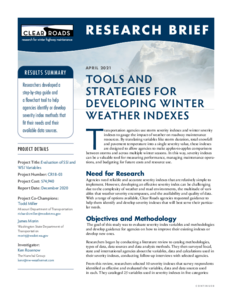Displaying results 1 - 10 of 118
Appendices to Evaluating the Effectiveness of the Minnesota Speed Management Program
Date Created
2007-05
Report Number
2007-21A
Description
Evaluation of SSI and WSI Variables
Date Created
2020-12
Report Number
CR18-03
Description
Appendices: Clear Roads Project 18-03: Evaluation of SSI and WSI Variables
Date Created
2020-12
Report Number
CR18-03A
Description








